Hello fiber friends! It’s been a long time since my last post. I wish that I could tell you that I completed all the organizing I intended to do, but I cannot. The work continues!
Although it is almost fall where I live in northeast Kansas, we are enduring late season hot weather. It might even get up to over 100 degrees F in the next day or two. Well, I won’t let those temperatures upset me too much. Instead I am going to prep some wool so that when t cools down I will be ready to spin some luscious wool.
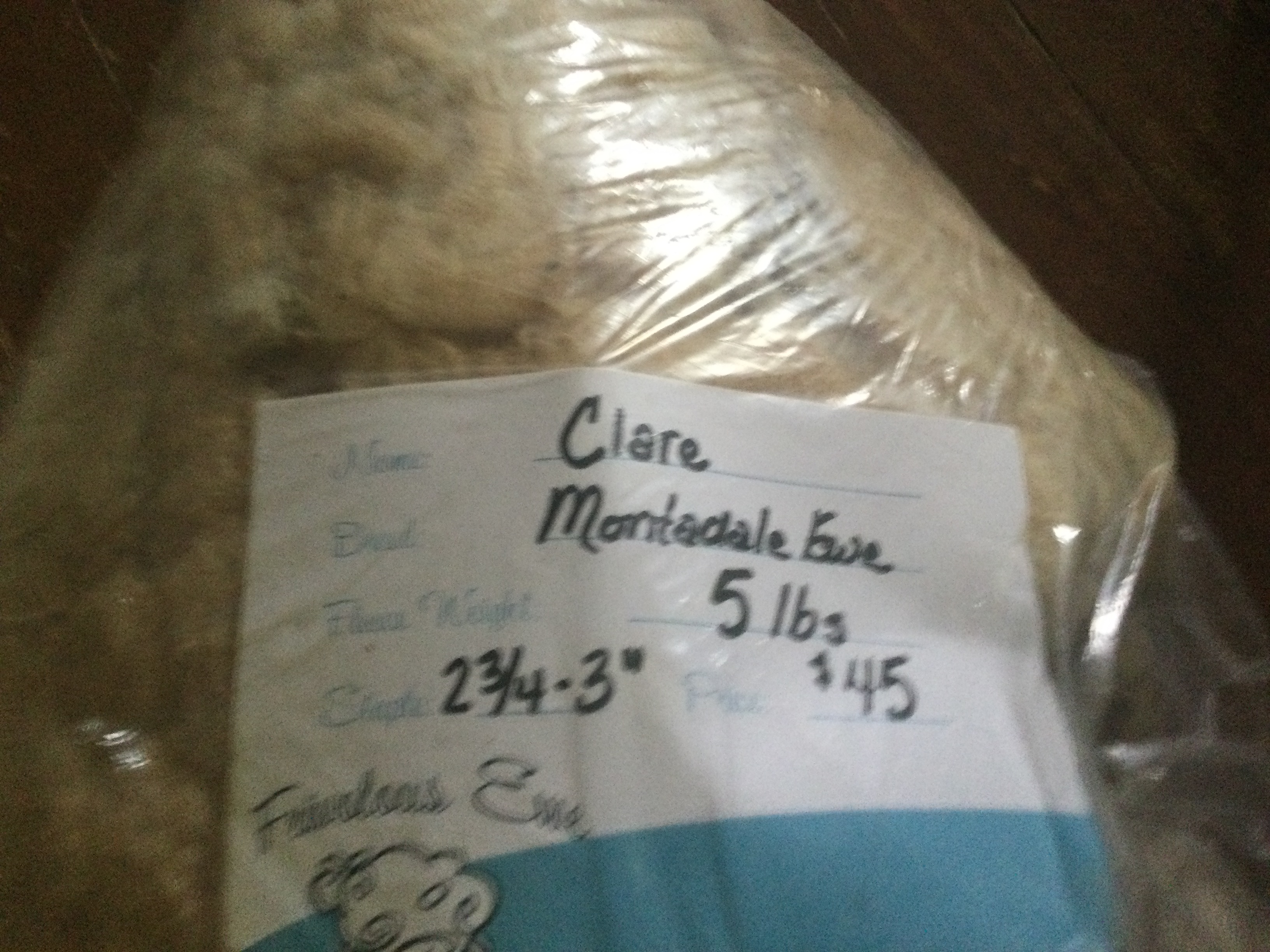
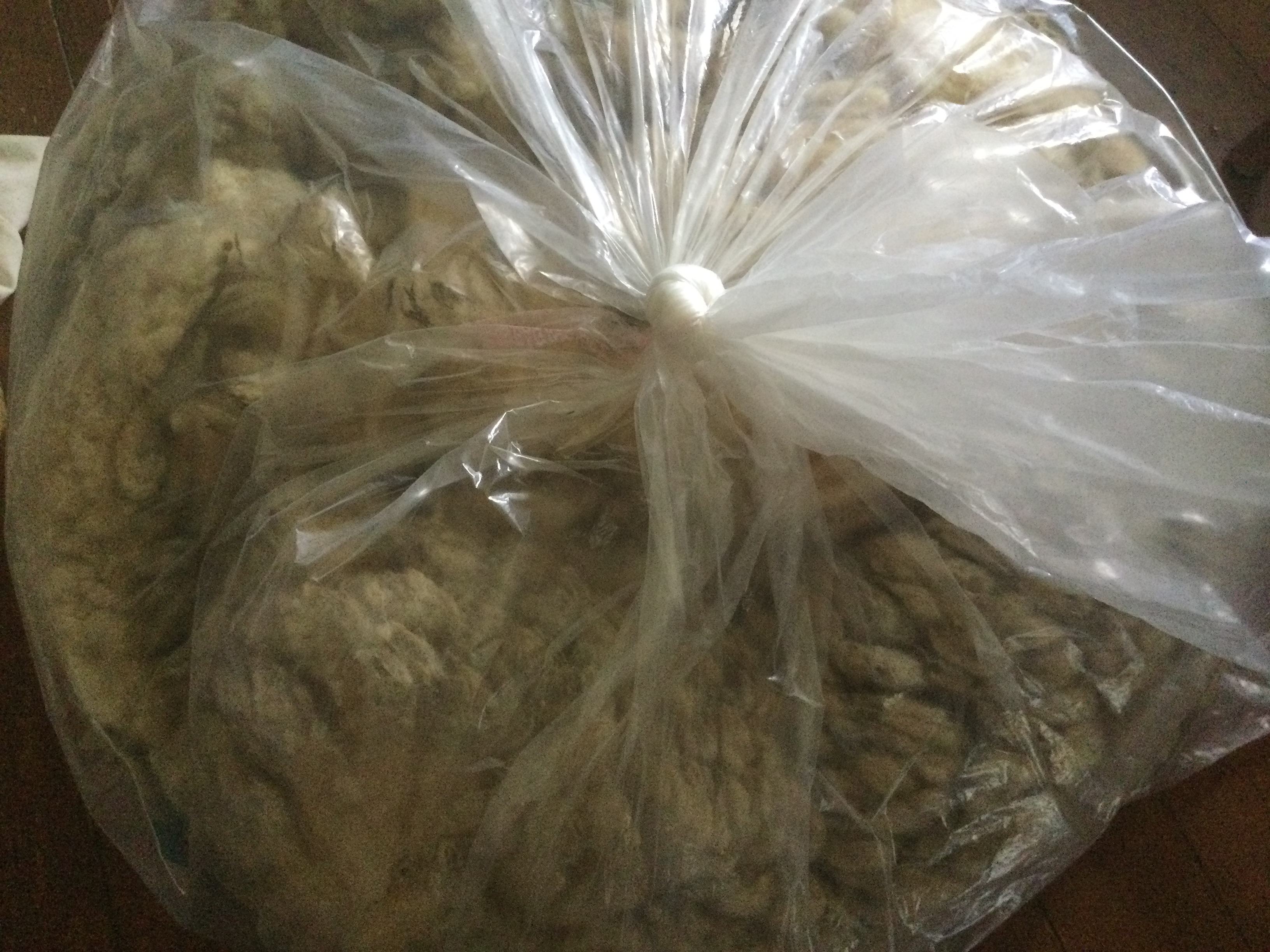

Although I now know it is recommended that the wool be placed in a paper sack like a large leaf bag so it can breathe, I am glad I kept this fleece in its plastic trash bag. There were several dead Japanese beetles in the fleece and there was no damage to be seen, thank goodness.
It is also recommended that raw fleece be kept somewhere else besides inside your house, again because the potential is high for bug infestation.
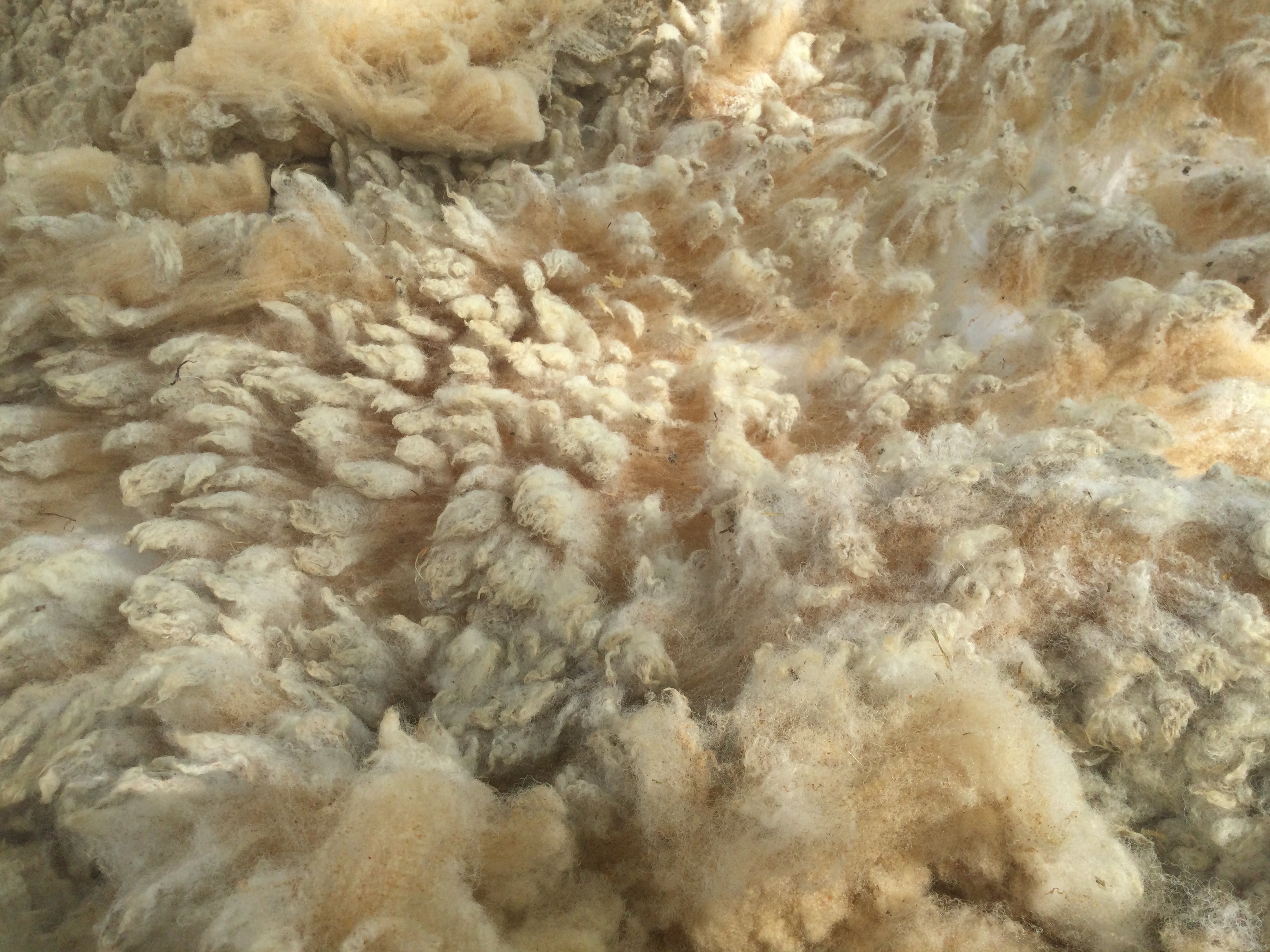
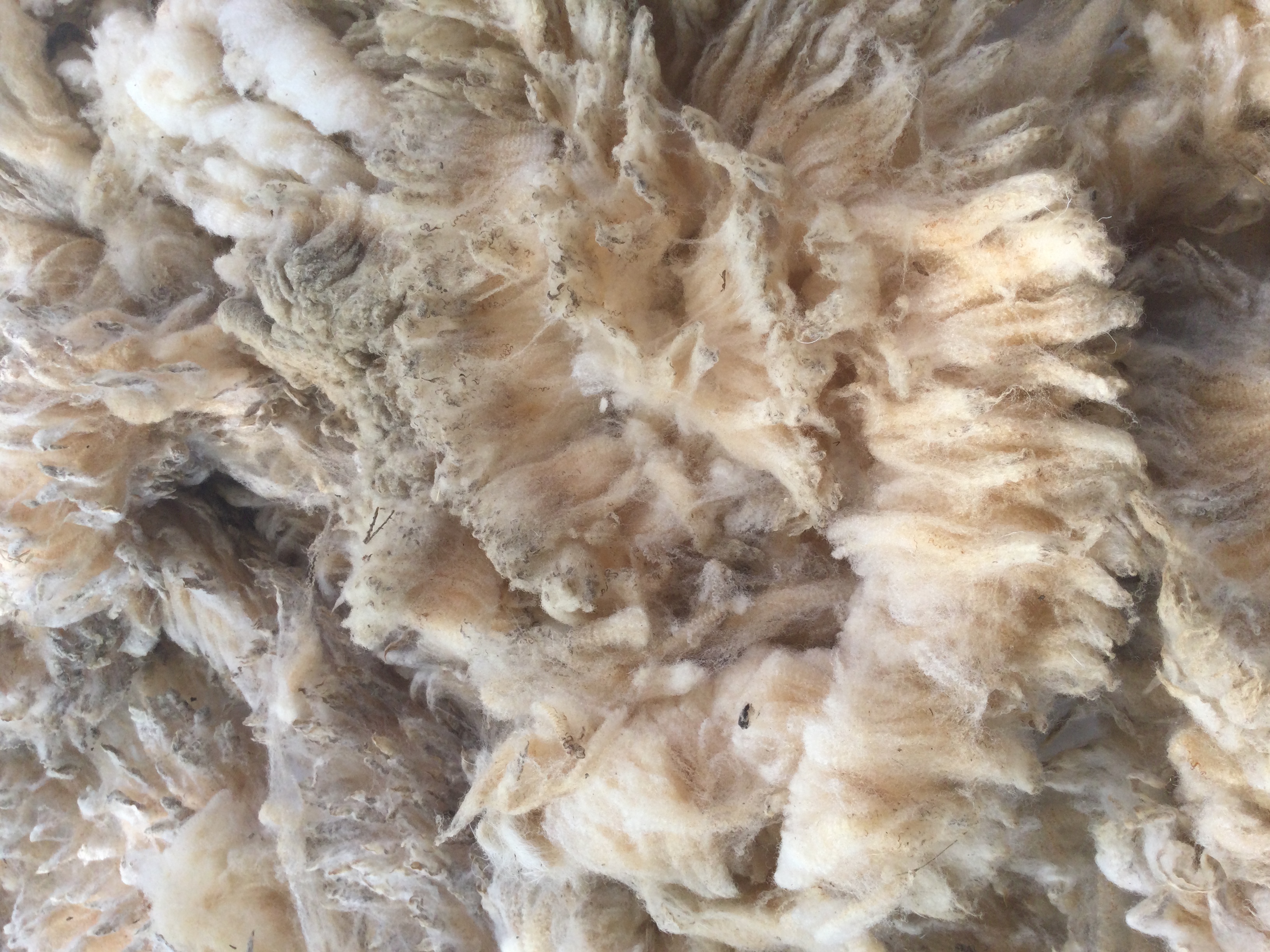
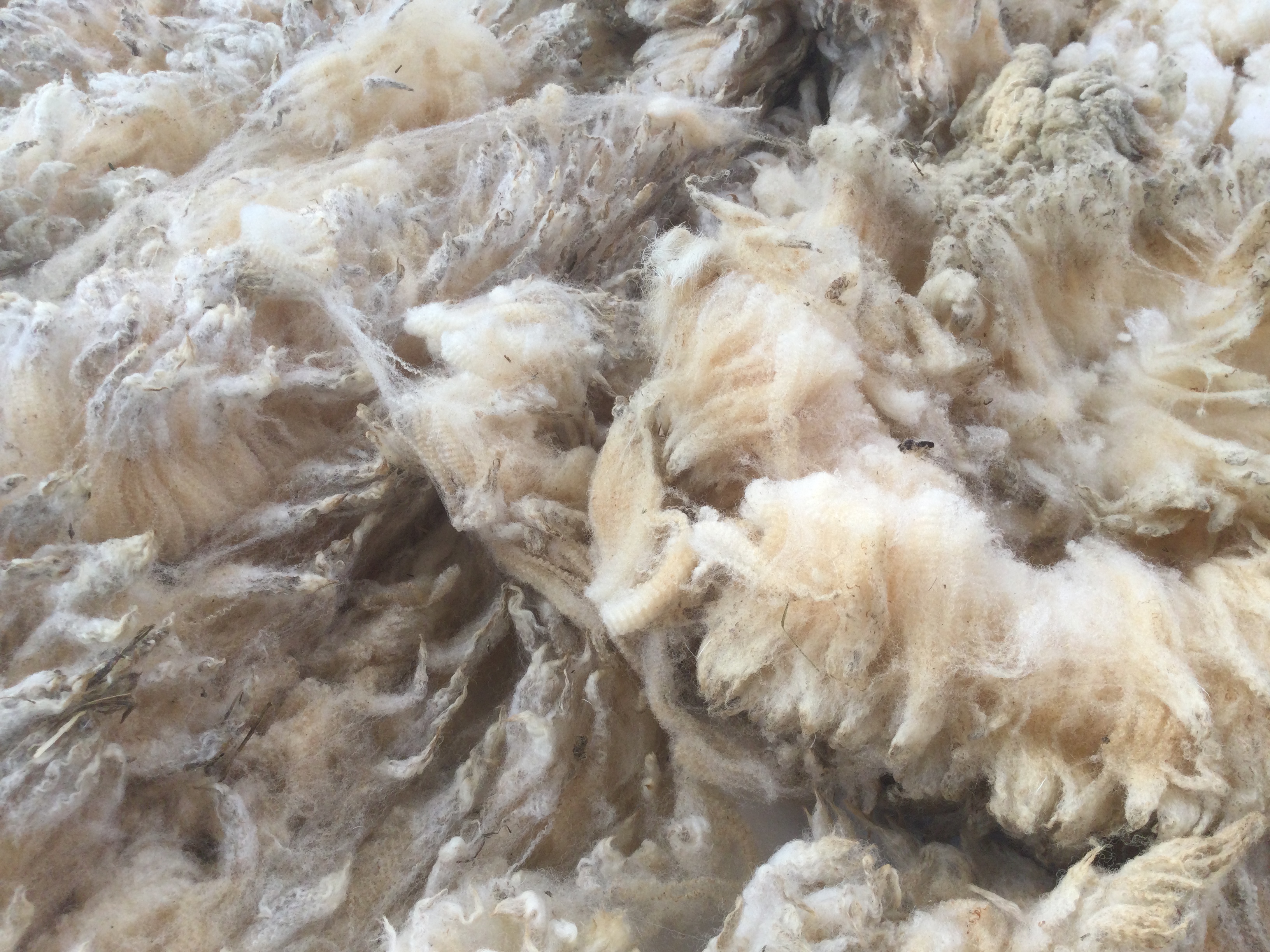
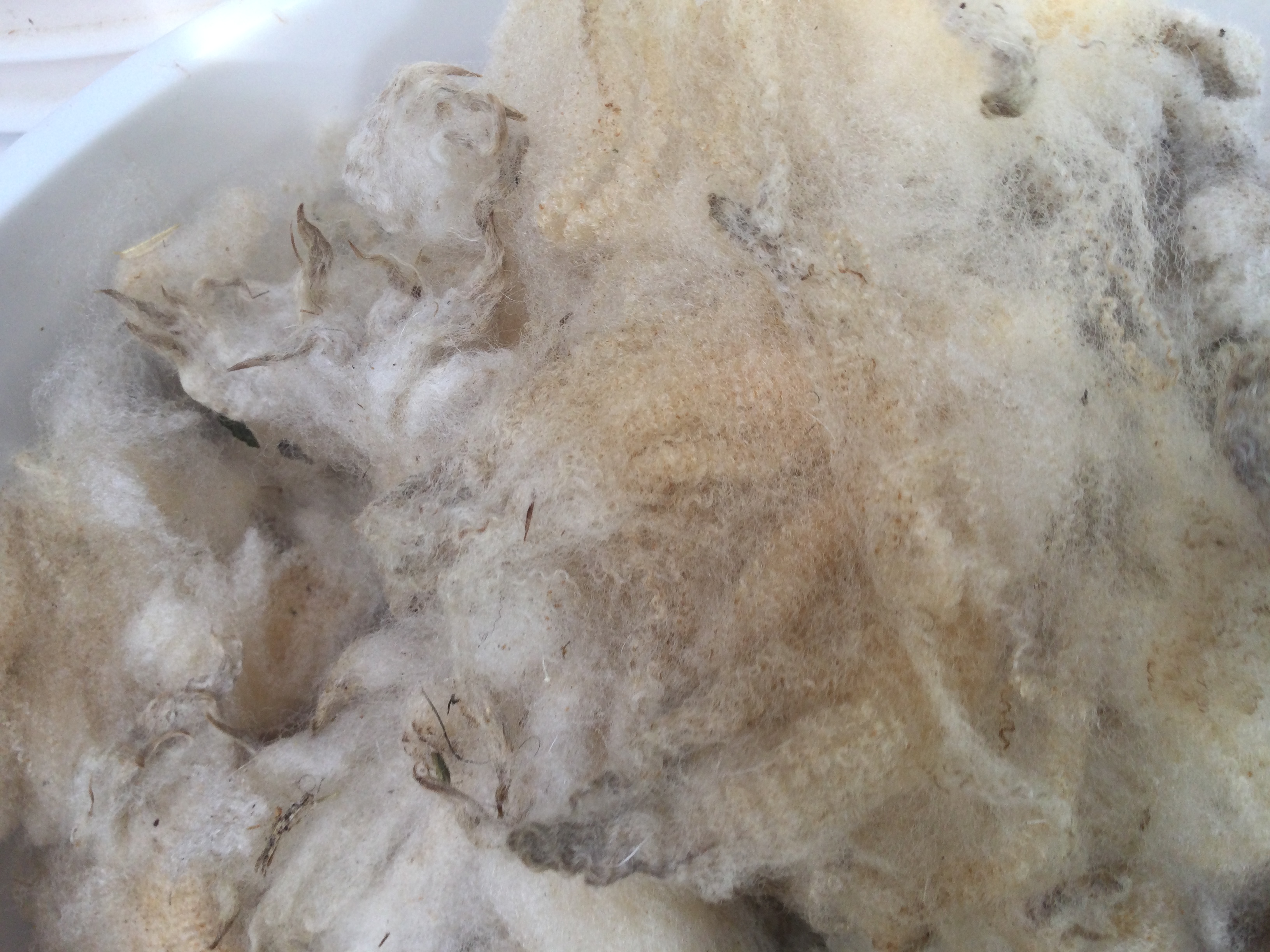
I am not sure if you can tell but there is a nice tight crimp with this fleece. What you are looking at is unwashed wool and I think it already is quite beautiful.
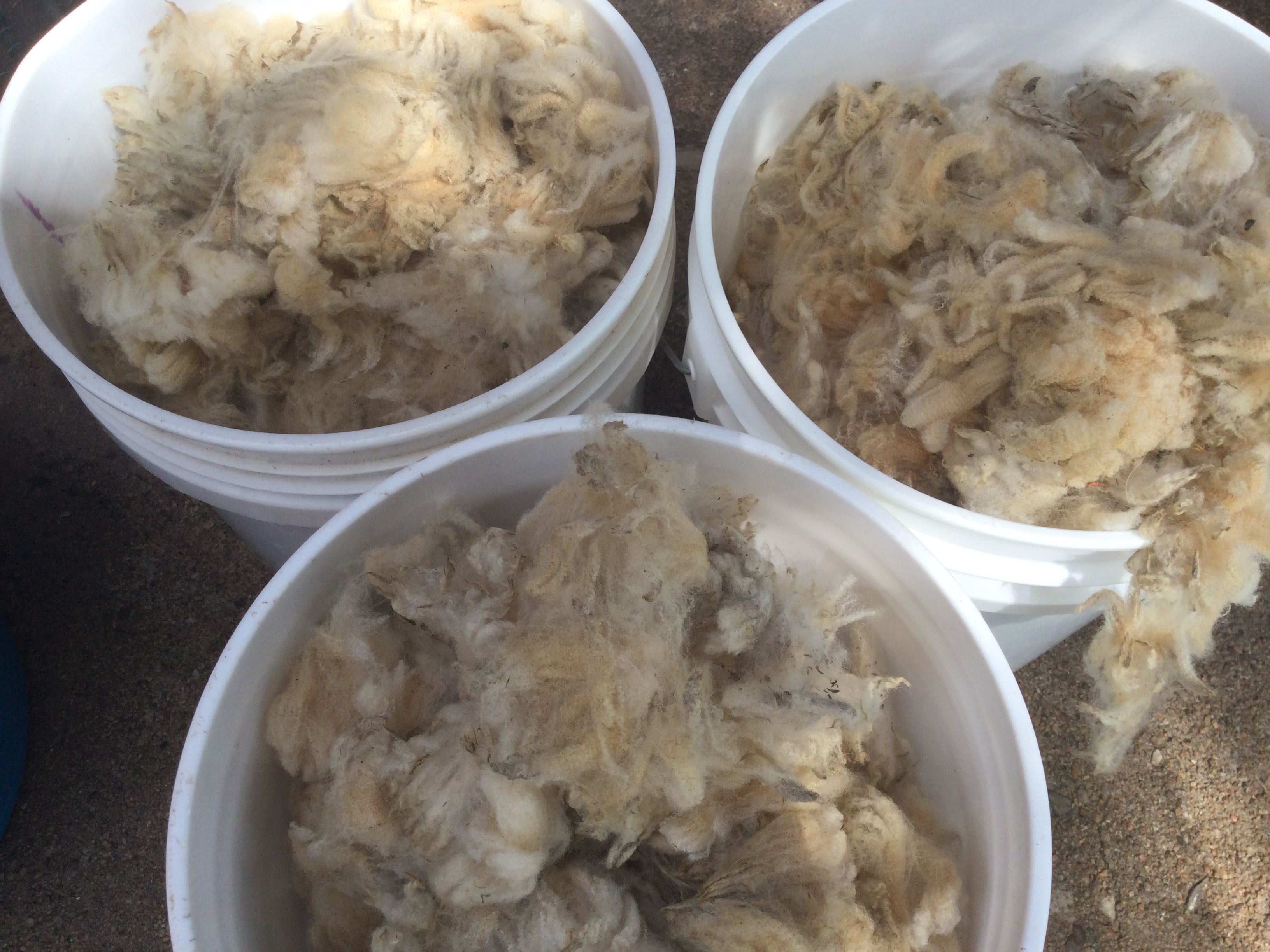
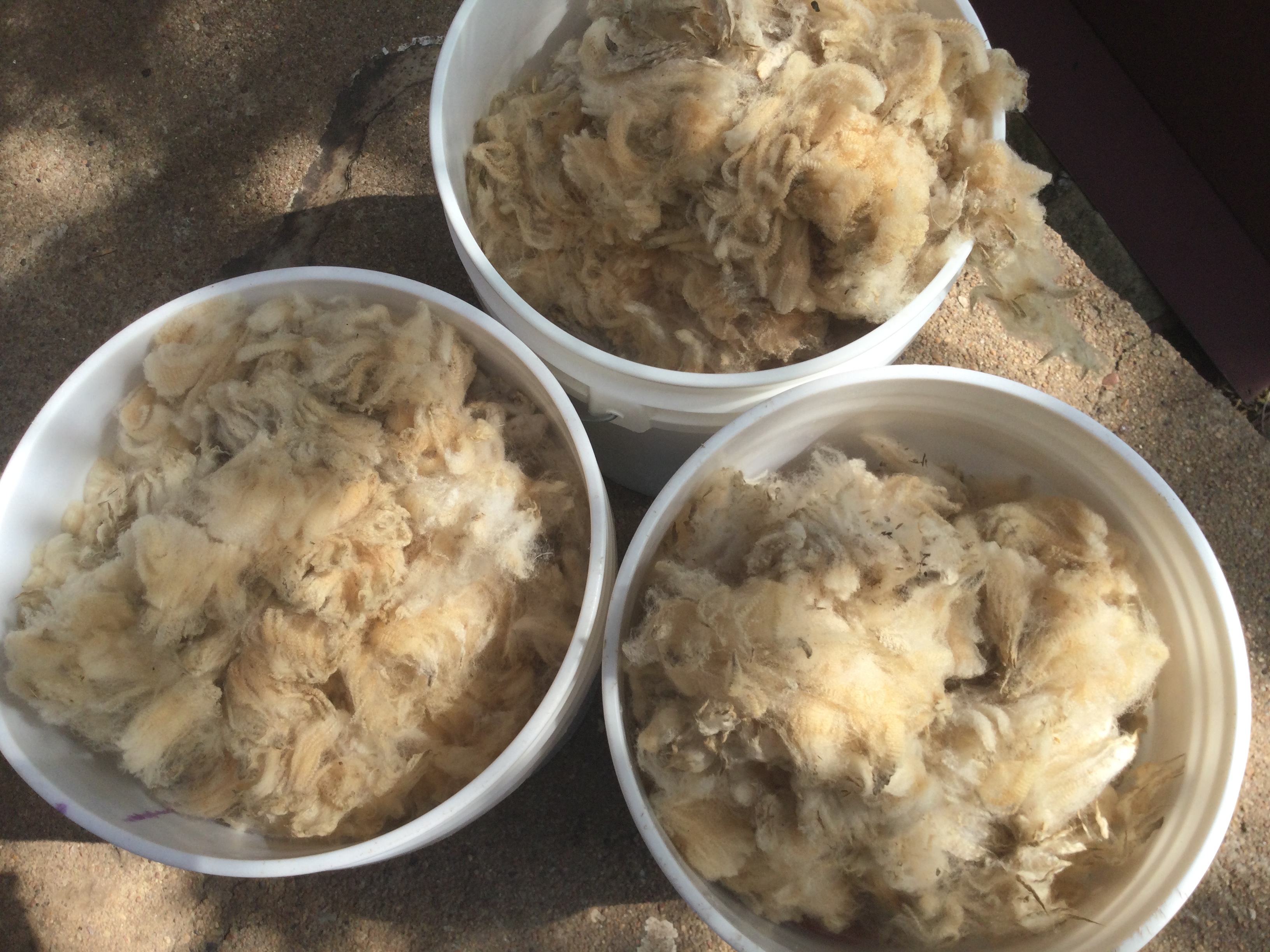
I pulled off all the short pieces that are called second cuts, since they are of no use to the spinner. Even the best of shearers will go back and clean up the sheep by taking a second pass. Those pieces are too short for anyone to spin so they get composted or tossed away. I did not see many second cuts which was a good sign of a well sheared sheep.
I put the wool into buckets and then added water.
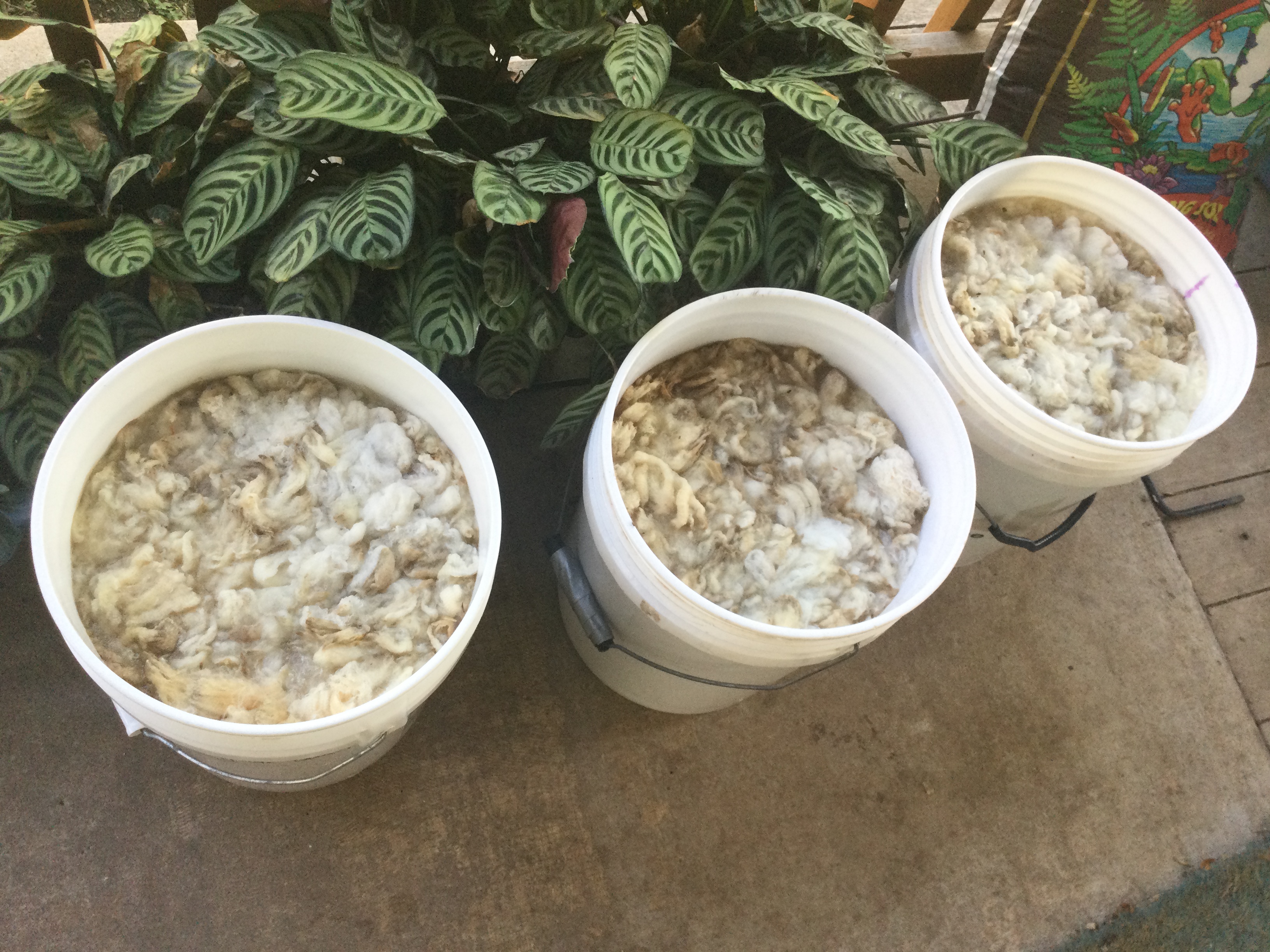

I will let the raw wool soak for at least a day or two. The raw wool has a natural soap in it that will help tremendously to remove a lot of the dirt on the wool.
Next, I will be scouring the fleece.
See you in a couple of days with more info on this breed of sheep and how I scour the fleece. See you soon!
All photos taken by me.
This is the first time I have seen unprocessed wool, it all looks like a very interesting procedure to me, although I suppose it takes a lot of effort and work to get the final product and then be able to use the wool for knitting.
I would love to see more of this interesting process.
Thanks for sharing.
Thanks for your comment @kattycrochet. I find these process fascinating. I love observing the different qualities of wool with each breed of sheep. My hope is to someday raise a little folk of my own. We shall see!
There is a local business that has started this year turning raw wool into yarn, as you are doing. I don't know much about the process, but am very interested in learning more about it from your posts.
Thanks!
Awesome! I haven’t processed raw fleece in a little while so it is nice to be doing this again! Thanks for your comment!
I 💕 @cuddlekitten!